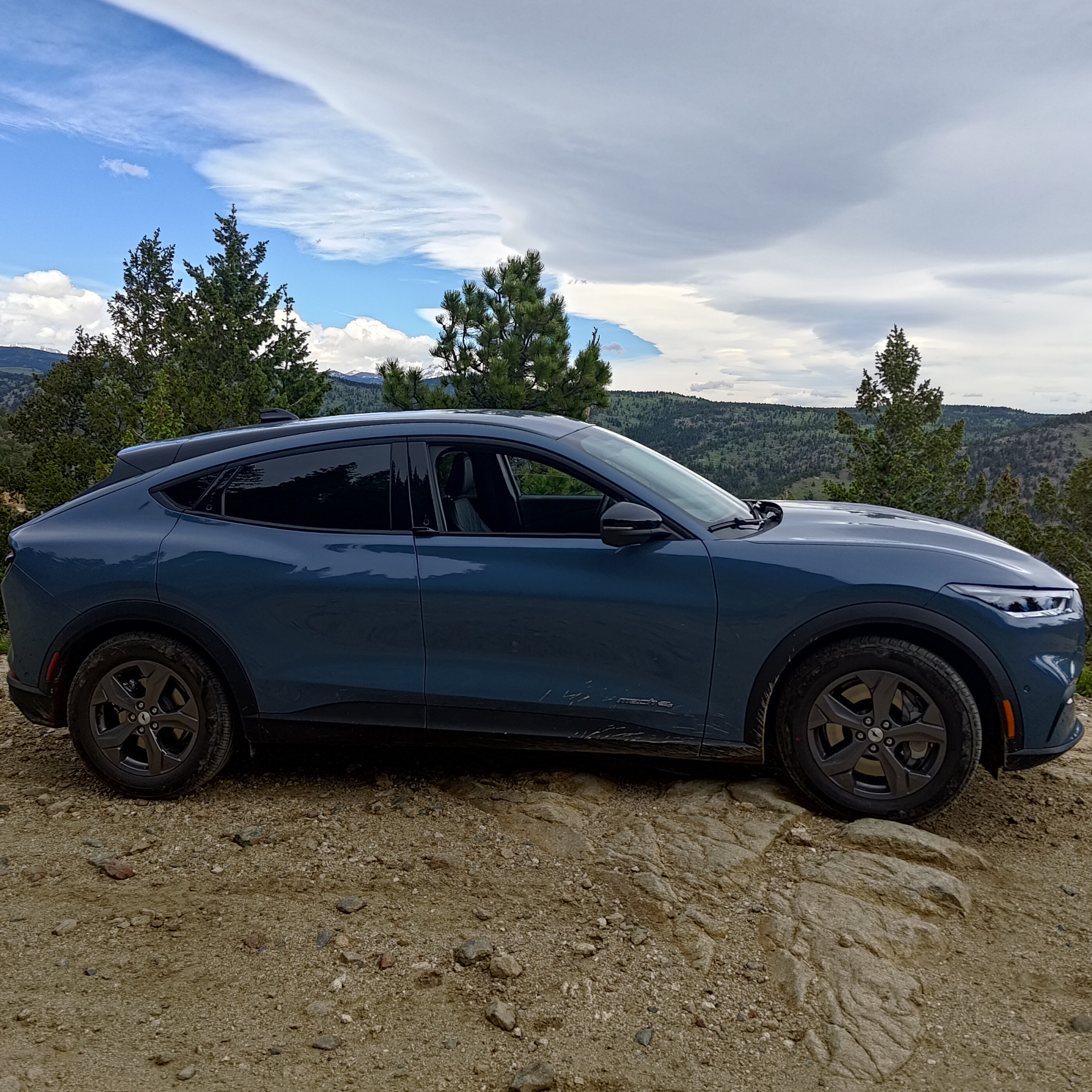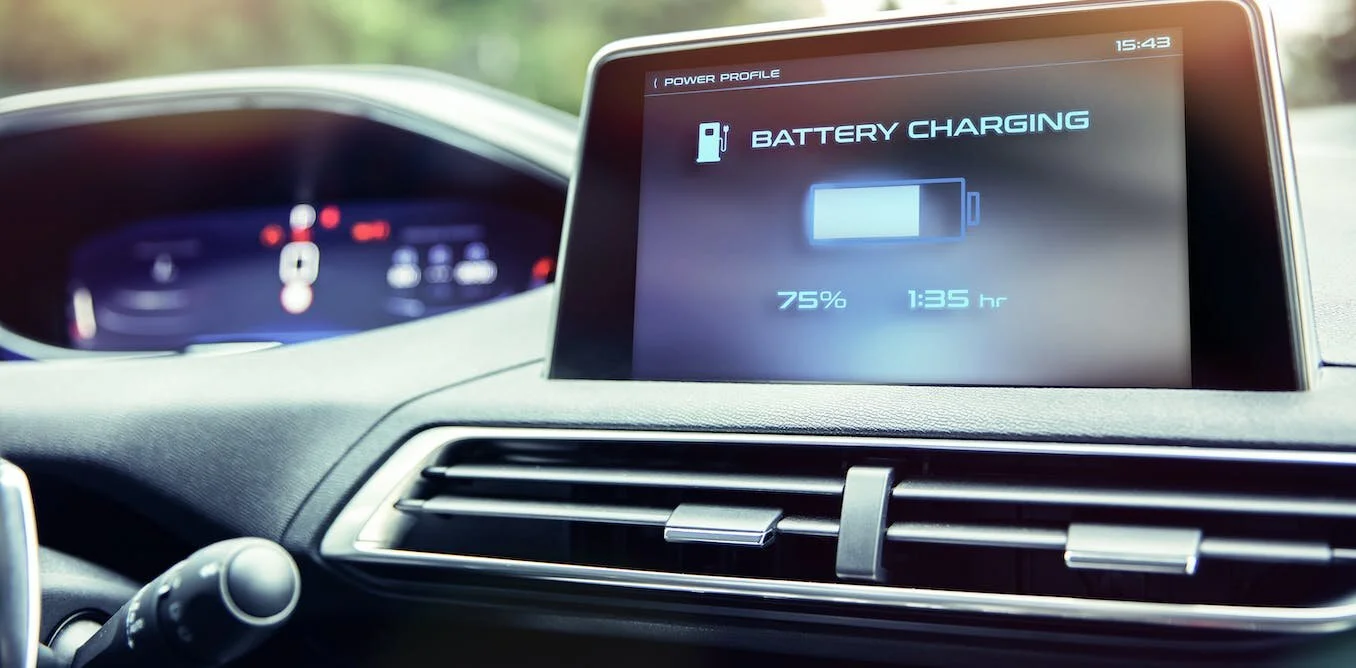
Regenerative braking has more influence on battery charge in stop-and-go traffic than it does on thw highway

As well, EV’s lose very little of their energy to heat or other losses between the battery and wheels unlike ICE vehicles. The result is drag plays a more significant percentage of where the energy is “going”, so the impact of higher speeds on range is greater then it is for ICE vehicles.

This was a lab test so regenerative braking didn’t factor, they just measured how much power they got from discharging the battery at full vs half load.
If you draw more power from a battery, you get more voltage drop. Voltage drop is a measure of the power lost (heat generated) within the battery and circuitry and it’s the internal resistance of the battery plus circuitry multiplied by the amps drawn. More power = more amps = more losses. This is why higher power applications use higher voltage battery packs because higher voltages mean fewer amps and smaller losses (power = amps x volts).

This is a great little summary. I knew these principles but this puts 2 and 2 together nicely.

You beat me to it, regenerative braking is strong in modern EVs. In several of them you can one-foot drive them, meaning take your foot off the throttle pedal, and the generator(s) will start harvesting hard enough to slow the car to a stop, charging the batteries the whole time. You only need the brake to emergency stop. And if you do choose to brake, you are just harvesting even more energy.

This is something everybody with an ev already knows. Drag is a big factor at high speeds. But under 40mph (65kph) it’s pretty negligible. If you did a constant 30mph you could probably triple your estimated range.
With an ICE vehicle, you’re wasting a lot of energy at low speeds being inefficient. But with an electric motor, you’re always using exactly as much energy as needed to move.

Something about intermittent power draw vs. constant draw.
I have the same effect on my electric dirtbike. I get a lot more mileage off-road up and down hills at 15-40km/h than I do on flat road at 70 km/h.

Well, yeah? Electric motors require more energy to go faster, and a petrol car has gearing to solve this problem. The slower you drive in an EV, the more range you get.

It’s not just because of gearing. It’s because an internal combustion engine generally gets more efficient when it runs with a high torque.
An ICE car still requires more energy to go faster, but going faster allows you to use a higher gear without stalling the engine, which increases the torque and makes the engine more efficient. Combustion engines aren’t very efficient to begin with because the thermodynamic processes they rely on just aren’t very efficient, reaching generally only a bit above 20% in realistic scenarios, so any decent chance in the engine’s efficiency generally overcompensates for the additional energy the car required to travel at higher speed. Though eventually drag does take the upper hand and with speeds above 100km/h the fuel efficiency of an ICE car usually starts to decrease again.
Electric motors have a much flatter efficiency curve (especially with modern, advanced driving circuitry), so the extra drag at higher speed just directly translates to higher battery consumption.
The relatively flat efficiency curve of electric motors is also part of the reason why most electric cars don’t have any gears, combined with the very high RPM limit of electric motors. There simply isn’t a need for them.

It’s the drag that reduces range at higher speeds. I even get better range in CO because the wind is thinner up here.

Gearing actually isn’t that big of an issue because synchronous motors do not have an efficiency dropoff at higher RPM, until they hit a point where the magnetic fields start to slip due to the opposing torque (eg friction and drag and inertia). Aerodynamic drag and elevation are the primary variables for range

I’m guessing this is mostly because ICE vehicles waste more energy in town (due to braking loss, and engine inefficiency), than a problem with BEVs.
BEVs claw back the losses in town, meaning that only the simplest inefficiencies are left (v=ir2/2 with the wind and tyre resistance, and maybe a little bit of hot components reducing efficiency).
Those same highway inefficiencies are masked in ICE vehicles, as the efficiency is much lower during urban driving to begin with.

Next you tell us that they have more mileage in moderate temperatures rather than in the winter or the summer…

The reason this is interesting is because it’s the reverse of gas cars. Typically the best efficiency of a gas vehicle is on the highway but for EVs you get much more efficiency in local streets

Well that’s only true if you don’t drive fast. When you go above 120 km/h you will see that the fuel consumption increases noticeably

The top commenter was pointing out this is extremely obvious and known which makes it less interesting.

This isn’t really new info, this was even the case for the 1st gen Prius over 20 years ago. It can be counter-intuitive for folks who are only used to internal combustion engines.

Electric cars are kind of a no brainer for city driving. We love our volt. Sad they do not make them any more.

Yeah, I always liked the volt. Sad it was killed

